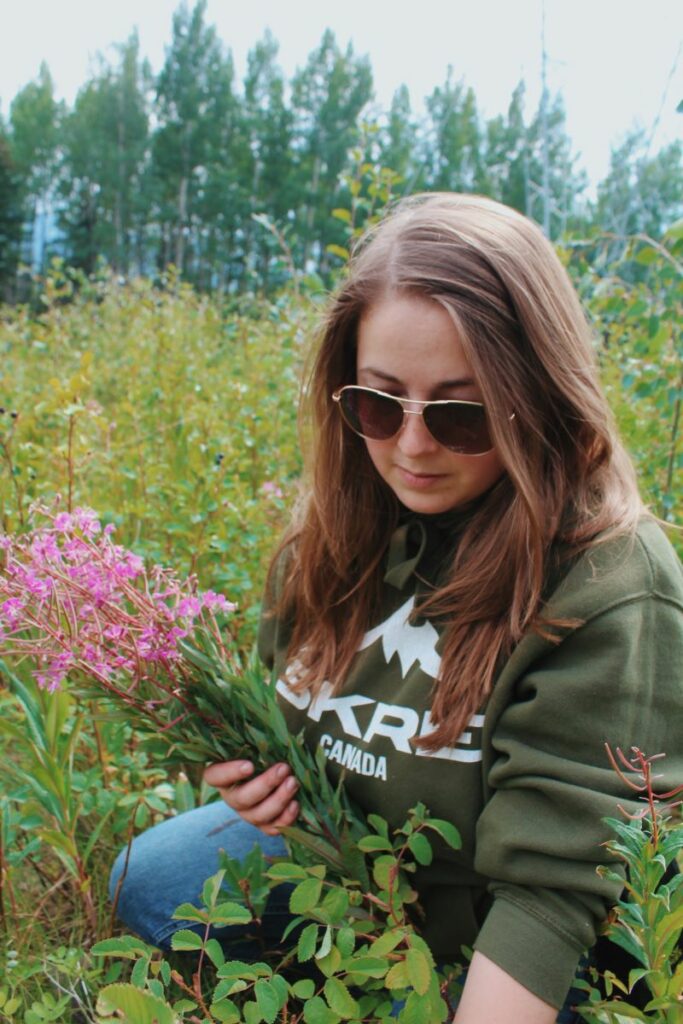The term “foraging” can conjure up a variety of images – out in the forest, on a grassy plain, in a valley bottom. Foraging opportunities exist all around us, including in our backyard. There are a few more things to consider (although arguably they should be in the back of your mind no matter where you are harvesting from): the more populated an area is, the higher likelihood that there may be environmental pollutants, herbicides sprayed or other contaminants. You should avoid picking in those areas, and as tempting as it may be to pick plants like plantain and wild chamomile from your driveway, perhaps try finding some on the edge of your backyard instead to avoid pollutants from vehicles.
Wild Raspberry (Rubus Idaeus)
Wild raspberries, while not as large or firm as domesticated varieties, are still a delicious treat that everyone should enjoy. You can often find them in areas of previous disturbance as they are resilient plants. In my backyard, I find them in old rock piles and growing amongst the saskatoon bushes that exist. As wild raspberries are incredibly delicate and squishy, it’s easiest to just enjoy them fresh off the cane or in smaller quantities rather than picking a big bucket, because they are prone to crushing.
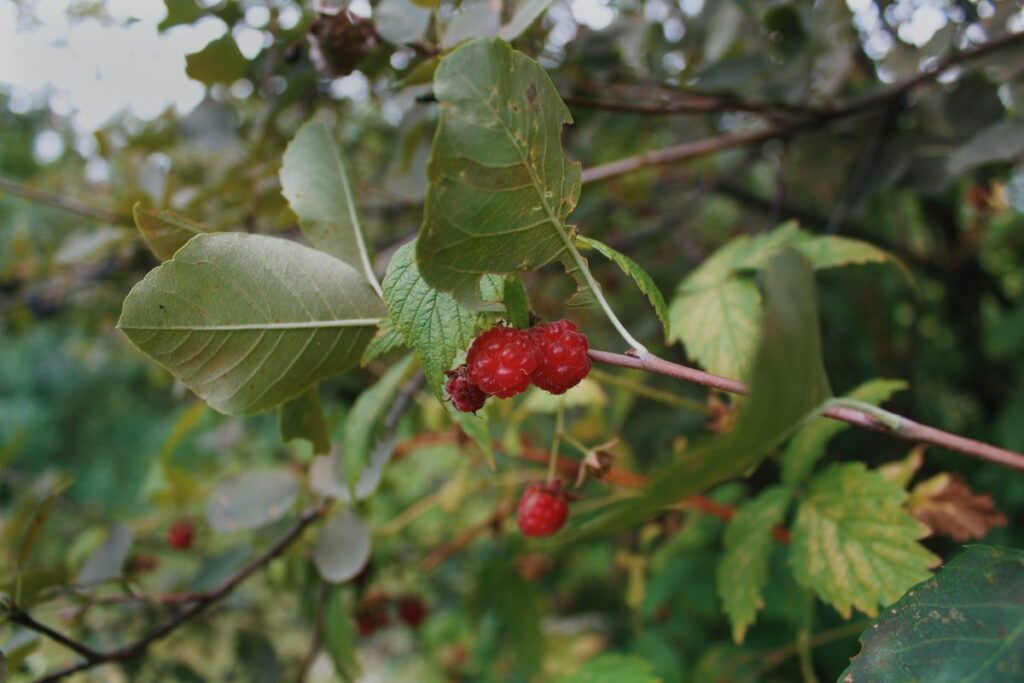
Wild Chamomile (Matricaria Discoidea)
You have probably walked overtop of wild chamomile and not even realized what you were stepping on, unless you have crushed the dainty yellow flowers and caught the distinct pineapple scent that is given off (hence why it is goes by another common name, pineappleweed). There are a variety of edible and medicinal uses of wild chamomile, many of them similar to domesticated chamomile. It has been known to trigger an allergic reaction from some people after consumption, so take care if you are trying it for the first time.
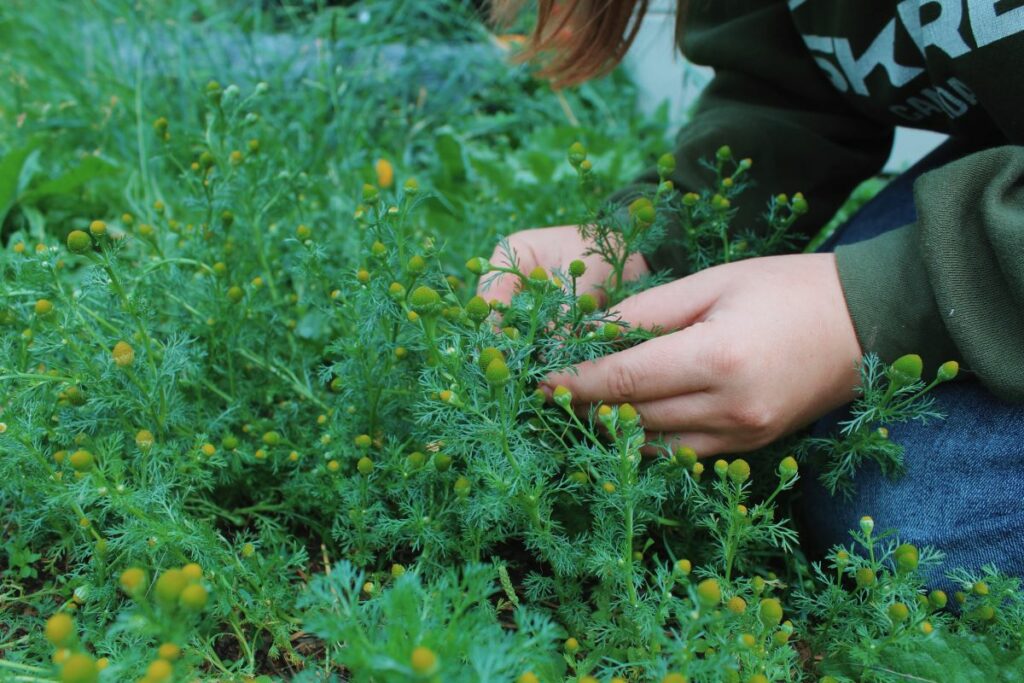
Saskatoon (Amelanchier Alnifolia)
I have been known to say I prefer huckleberries to saskatoons, but they are always on my (somewhat literal) bucket list of things to pick throughout the summer. They grow throughout the province and although they sometimes get a bad rap for being seedy, some bushes will produce plump, juicy fruits that rival domestic blueberries in size! If you are on the fence about them, here’s a way to make use of them: combine saskatoons with huckleberries in a recipe. This helps combat the seedy texture saskatoons can sometimes have.
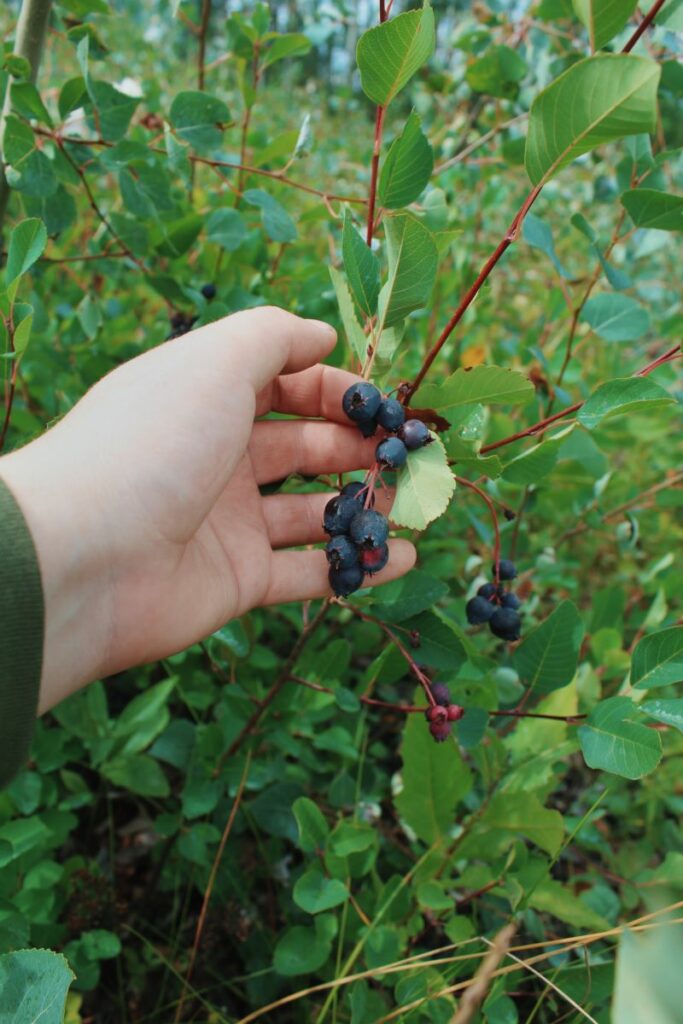
Plantain (Plantago Major)
It seems that 2023 is a bad year for hornets and wasps in northern BC – it’s only a matter of time before you disturb a nest, even if you are just in your own backyard. Keep plantain in mind if you end up getting stung. Plantain is one of those plants that I prefer to utilize while fresh, and making and applying a plantain poultice to stings can help relieve the discomfort. It’s also a great relief if you have inadvertently ended up in some stinging nettle.
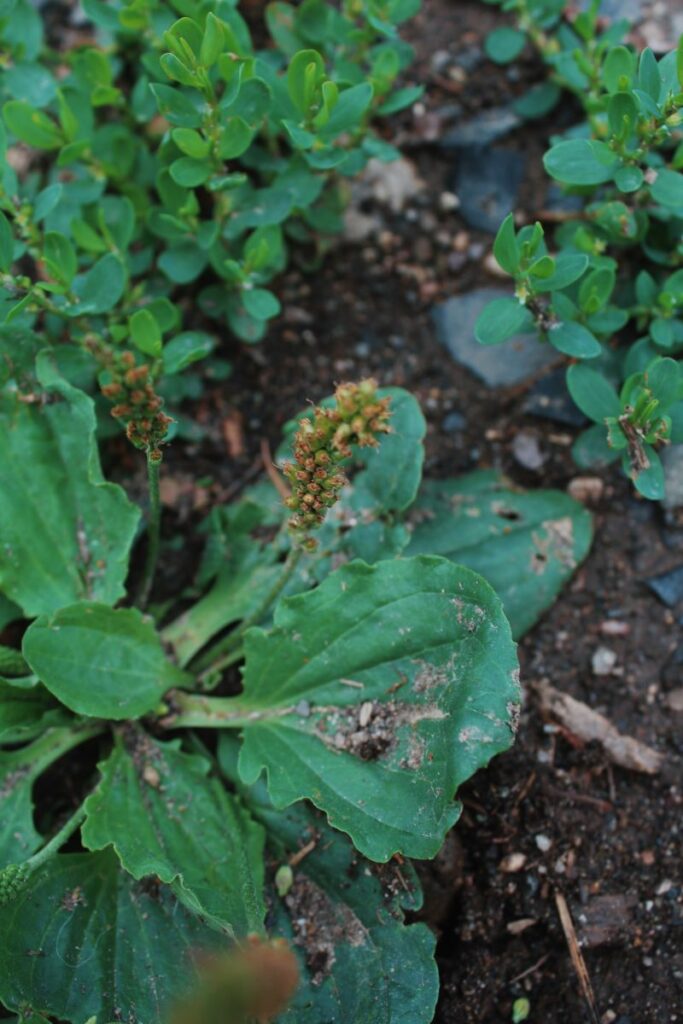
Fireweed (Chamaenerion Angustifolium)
An incredibly versatile plant to forage, fireweed can be harvested throughout the year except for winter. Spring is optimal time to harvest the young shoots for consumption, while the leaves can be picked from the time they appear to whenever they get hit by a frost in the fall and start to turn brown and crunchy. The flowers are best (and easiest) to pick once they have bloomed all the way to the end of the stalk. Fireweed can pop up anywhere in your yard where there has been disturbance, and oftentimes will grow amongst your planted flowers in a flower bed.
